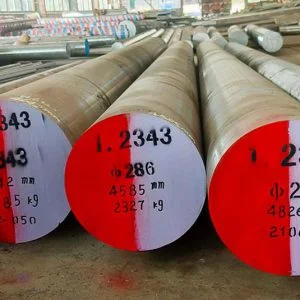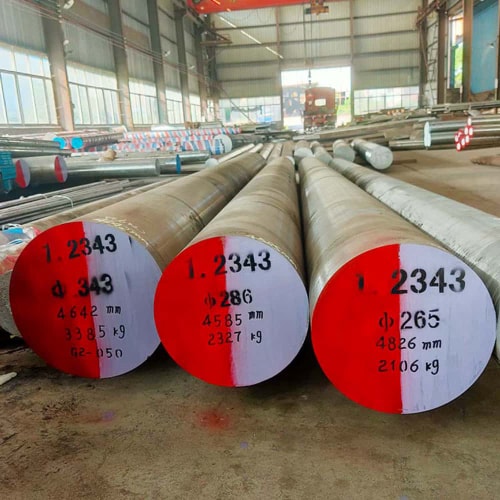Introduction

In the realm of metallurgy and industrial applications, H11 tool steel stands out for its robust properties and versatile applications. This blog explores the strengths and diverse applications of H11 tool steel, shedding light on its composition, mechanical characteristics, heat treatment, and practical uses.
What is H11 Tool Steel?
H11 tool steel is a chromium-based hot-work steel known for its high toughness, excellent resistance to thermal fatigue, and good heat resistance. It is widely used in various industrial sectors where tools and dies are subjected to high-temperature environments.
Composition of H11 Tool Steel
H11 tool steel typically consists of the following composition:
| Element | Percentage (%) |
|---|---|
| Carbon (C) | 0.33 – 0.43 |
| Chromium (Cr) | 4.75 – 5.50 |
| Molybdenum (Mo) | 1.10 – 1.60 |
| Vanadium (V) | 0.30 – 0.60 |
| Silicon (Si) | 0.80 – 1.20 |
The specific composition contributes to the unique properties of H11 tool steel, including its hardness and heat resistance.
Mechanical Properties of H11 Tool Steel
H11 tool steel offers impressive mechanical properties:
- Hardness: Typically achieves a hardness of around 45-52 HRC (Rockwell C scale).
- Toughness: High toughness, allowing for resistance to cracking under thermal cycling.
- Strength: Good strength at elevated temperatures, maintaining performance in hot-working applications.
Heat Treatment of H11 Tool Steel
Heat treatment plays a critical role in enhancing the properties of H11 tool steel:
- Annealing: Heat to 850-890°C, followed by slow cooling in the furnace to relieve stress and refine the microstructure.
- Hardening: Quenching in air or oil from 1010-1040°C to achieve desired hardness and toughness.
- Tempering: Temper immediately after hardening at 550-650°C to achieve the required balance of hardness and toughness.

Applications of H11 Tool Steel
H11 tool steel finds extensive applications in:
- Die-casting dies: Due to its high hot strength and thermal shock resistance.
- Extrusion tools: Handles high-temperature conditions encountered in metal forming processes.
- Forging dies: Offers durability and resistance to thermal fatigue during hot forging operations.
- Aluminum and magnesium die-casting: Maintains dimensional stability and longevity under harsh conditions.
Advantages of H11 Tool Steel
The table below summarizes the advantages of H11 tool steel:
| Advantage | Description |
|---|---|
| High toughness | Resists cracking and chipping under thermal stress. |
| Excellent heat resistance | Maintains hardness and strength at elevated temperatures. |
| Good machinability | Allows for ease of machining and shaping into intricate tooling designs. |
| Versatile applications | Suitable for a wide range of hot-work tooling applications. |
Conclusion
H11 tool steel stands as a formidable choice in the realm of hot-work tool steels, offering a blend of toughness, heat resistance, and machinability essential for demanding industrial applications. Understanding its properties and applications is crucial for optimizing performance and durability in tooling and die-casting operations.
FAQ
1. What are the main differences between H11 and H13 tool steels?
H11 and H13 tool steels differ primarily in their composition and applications. H11 offers higher toughness and resistance to thermal fatigue, making it suitable for die-casting dies and forging applications, while H13 excels in hot-work tooling for aluminum and magnesium.
2. Can H11 tool steel be welded?
Yes, H11 tool steel can be welded using conventional welding techniques. However, preheating and post-weld stress relieving are recommended to minimize the risk of cracking.
3. How does heat treatment affect the properties of H11 tool steel?
Heat treatment refines the microstructure of H11 tool steel, enhancing its hardness, toughness, and resistance to thermal fatigue. Proper heat treatment procedures are crucial for achieving desired performance characteristics.
4. What industries commonly use H11 tool steel?
H11 tool steel is widely used in industries such as automotive, aerospace, die-casting, and metalworking, where tools and dies are subjected to high-temperature conditions and thermal cycling.
5. What is the maximum operating temperature for H11 tool steel?
H11 tool steel can withstand operating temperatures up to approximately 540°C (1000°F) without significant loss of mechanical properties.

